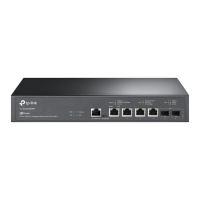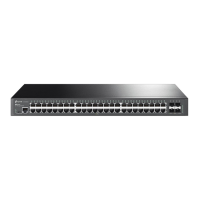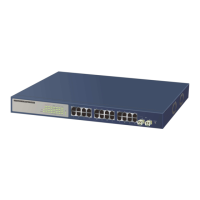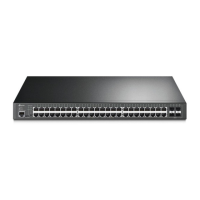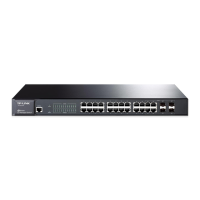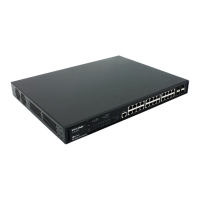Do you have a question about the TP-Link TL-SG3452P and is the answer not in the manual?
Outlines essential safety rules for device installation and handling to prevent damage and injury.
Lists necessary tools for installation and describes desktop and rack mounting procedures.
Explains how to connect via the console port using RJ45 or USB for switch management.
Explains how to configure the switch using GUI or CLI in Standalone Mode.
Describes central management via Omada Hardware Controller or Omada Software Controller.
Provides steps to recover lost switch username and password via console port.
Outlines essential safety rules for device installation and handling to prevent damage and injury.
Lists necessary tools for installation and describes desktop and rack mounting procedures.
Explains how to connect via the console port using RJ45 or USB for switch management.
Explains how to configure the switch using GUI or CLI in Standalone Mode.
Describes central management via Omada Hardware Controller or Omada Software Controller.
Provides steps to recover lost switch username and password via console port.
| Switch type | Managed |
|---|---|
| Switch layer | L2/L3 |
| Quality of Service (QoS) support | Yes |
| Stackable | - |
| Form factor | 1U |
| Product color | Black |
| Number of fans | 3 fan(s) |
| Console port | RJ-45/micro-USB |
| Power connector | AC-in jack |
| SFP module slots quantity | 4 |
| Installed SFP modules quantity | 0 |
| Basic switching RJ-45 Ethernet ports type | Gigabit Ethernet (10/100/1000) |
| Basic switching RJ-45 Ethernet ports quantity | 48 |
| 10G support | No |
| Number of VLANs | 4000 |
| Networking standards | IEEE 802.1D, IEEE 802.1p, IEEE 802.1s, IEEE 802.1w, IEEE 802.3ad, IEEE 802.3x |
| Virtual LAN features | MAC address-based VLAN, Private VLAN, Protocol-based VLAN, Tagged VLAN, Voice VLAN |
| Ethernet LAN data rates | 10, 100, 1000 Mbit/s |
| Jumbo frames | 9000 |
| Forwarding rate | 77.4 Mpps |
| MAC address table | 16000 entries |
| Packet buffer memory | 12 MB |
| DHCP features | DHCP client, DHCP relay, DHCP server, DHCP snooping, DHCPv6 client, DHCPv6 snooping |
| Authentication | MAC-based authentication, Port-based authentication |
| Package type | Box |
| Package depth | 528 mm |
| Package width | 440 mm |
| Package height | 100 mm |
| Package weight | 6770 g |
| Cables included | AC |
| Heat dissipation | 1656.19 BTU/h |
| Storage temperature (T-T) | -40 - 70 °C |
| Operating temperature (T-T) | 0 - 40 °C |
| Storage relative humidity (H-H) | 5 - 90 % |
| Operating relative humidity (H-H) | 10 - 90 % |
| Total Power over Ethernet (PoE) budget | 384 W |
| Power over Ethernet (PoE) power per port | 30 W |
| AC input voltage | 100 - 240 V |
| AC input frequency | 50/60 Hz |
| Power consumption (max) | 485.4 W |
| Harmonized System (HS) code | 85176990 |
| Depth | 330 mm |
|---|---|
| Height | 44 mm |
